Simple Machines Kit Package
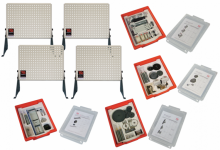
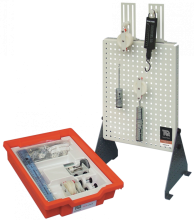

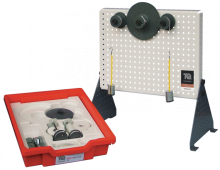
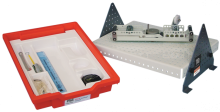
TecQuipment's Simple Machines Kit Package (ESB3 - Package) contains one of the Pulley, Drive Systems, Gear Trains and Centrifugal Force Kits, plus four Work Panels (ES1).
TecQuipment's Centrifugal Force Kit (ES16) demonstrates the relationship between centrifugal force, radius, and velocity of rotating masses.
The kit includes a unique pulley - the Weston Differential pulley - to show how two different size sheaves on one pulley has a dramatic effect on mechanical advantage. The kit introduces students to key engineering terms such as machine efficiency, velocity ratio and ‘work done’.
This kit also includes a wheel and axle with single, double and triple wheel or ‘sheave’ pulleys for experiments in mechanical advantage.
Students test fixed, movable and compound pulleys attached to load and effort weights to test their mechanical advantage.
This versatile kit is part of a series that allows many experiments using different arrangements of their parts. Students, teachers or lecturers fit the parts of the kit to the Work Panel (ES1) (supplied separately) to study or show an engineering science topic.
TecQuipment supplies a CD-ROM with the Work Panel (ES1). It includes all the worksheets, guidance notes and lecturer notes (with answers) needed for typical experiments with each kit. The selection of parts in the kits and the choice of fixing points on the Work Panel means that teachers or lecturers may extend the experiments to an even greater range.





TecQuipment's Simple Machines Kit Package (ESB3 - Package) contains one of the Pulley, Drive Systems, Gear Trains and Centrifugal Force Kits, plus four Work Panels (ES1).
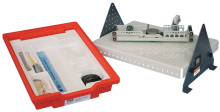
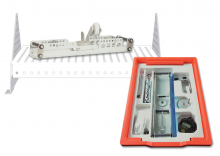
TecQuipment's Centrifugal Force Kit (ES16) demonstrates the relationship between centrifugal force, radius, and velocity of rotating masses.
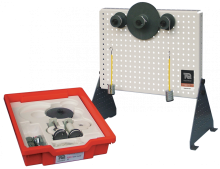
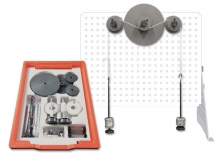
TecQuipment's Gear Trains Kit (ES13) demonstrates the characteristics of a spur gear, bevel gear, and a worm drive.
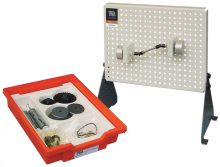
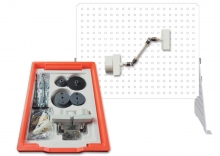
Drive Systems Kit (ES11) demonstrates the advantages and disadvantages of three popular drive systems: belt, chain and a universal coupling, using a manually rotated frame with a low friction cantilever linkage, adjustable masses and a spring to apply force.
